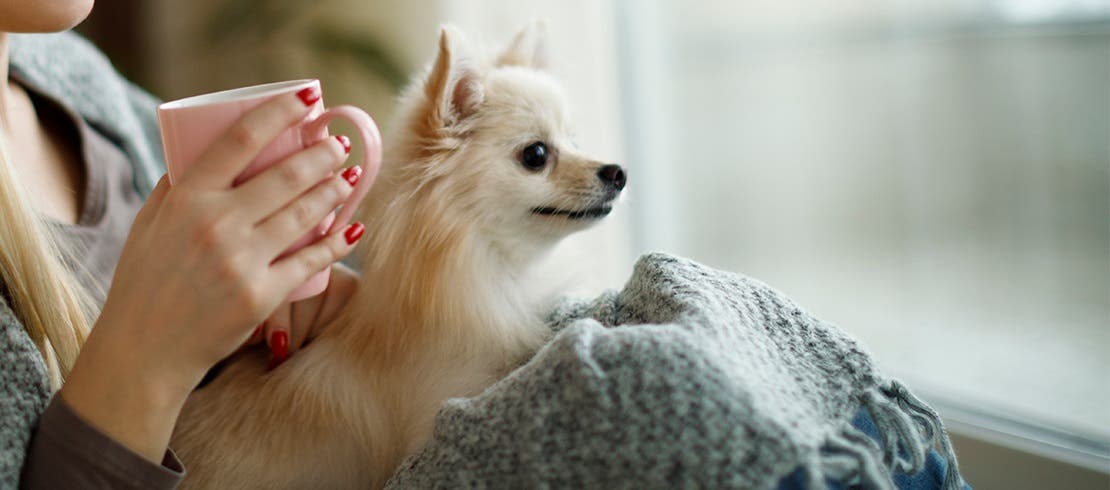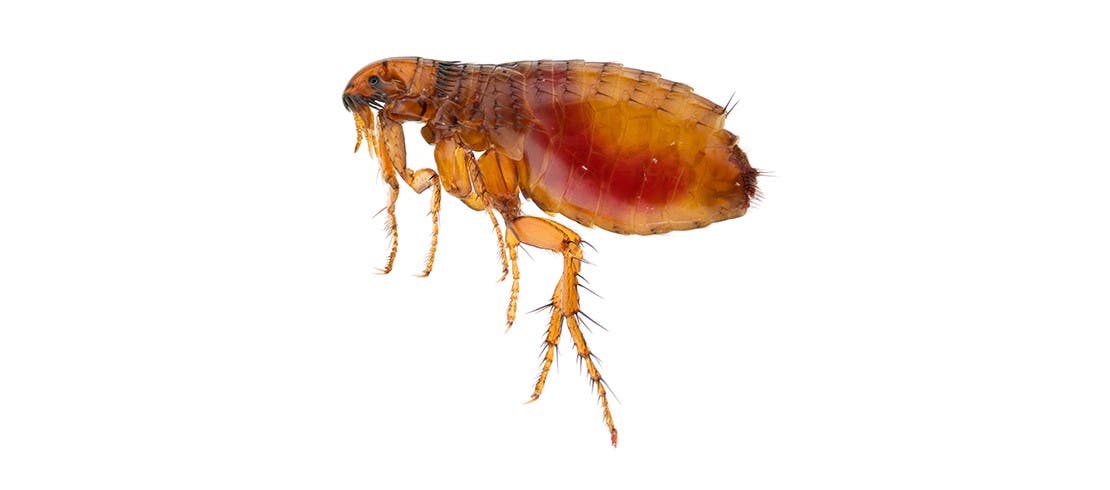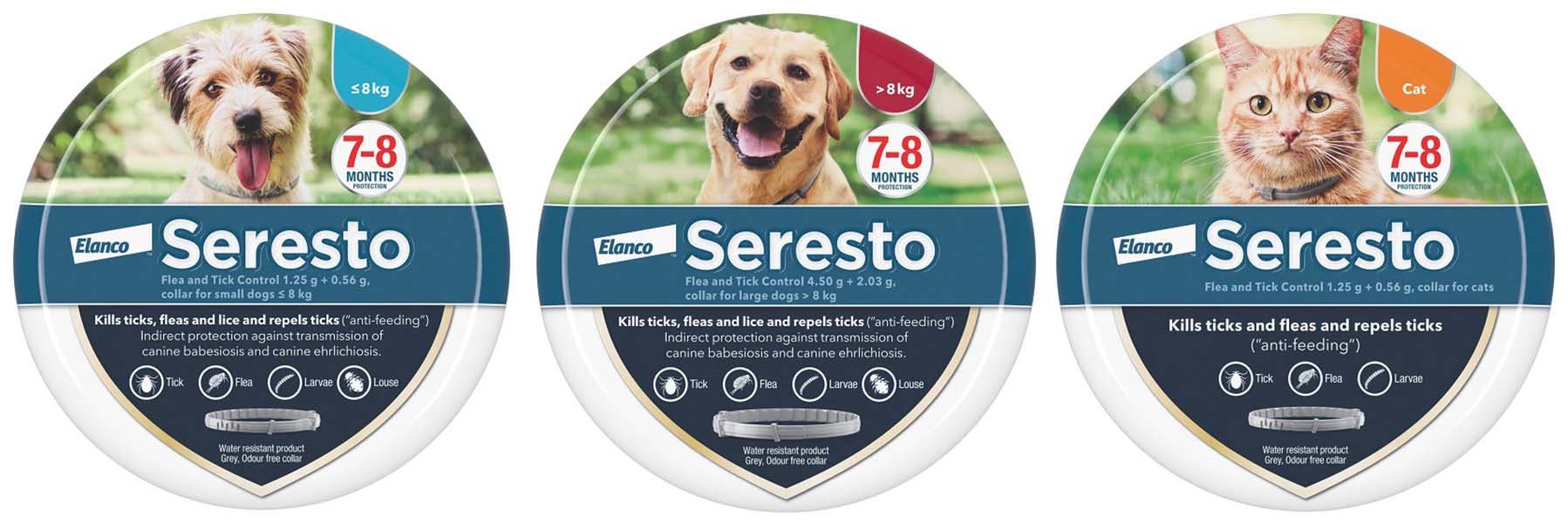Sometimes dogs will do anything to itch that scratch. If your efforts to hit the right spot aren’t enough, the edge of a table or a full rolypoly on the carpet will have to do!
But if your pooch is still struggling to satisfy the itch, it could be a sign that they’ve become a tasty blood meal for thirsty fleas. Not only are fleas on dogs a nuisance, they can carry horrid diseases, so you and your dog could end up with much more than just a nasty nip.
Get the low down on these tiny but tough insects and how you can treat your dog to stop an infestation in its tracks.
What are fleas?
Fleas are tiny wingless insects that feed on the blood of animals, including both pets and wildlife.
Fleas love dogs but the feeling definitely isn’t mutual. That’s because your pet may be bitten hundreds of times a day by fleas, which causes them to itch so desperately! They also bite humans, leaving a red spot that’s incredibly itchy.
But a flea can be much worse than its bite, as many of them are infected with diseases which they can pass on to the host they’re feeding on.
One of the most frustrating things about finding a flea is that they reproduce rapidly (they lay around 2,000 eggs in their lifetime) so if you spot one on your dog, it’s likely your house will be harbouring flea eggs. These can then go on to hatch and cause an infestation.
Fleas are also impressively mobile. They can jump around 66 times their own height and withstand a force of 100Gs – more than ten times that of a fighter jet!

What do dog fleas look like?
There are some 2,000 varieties of flea in the world, including the cat flea and the dog flea, but the most common type found on dogs is actually the cat flea.
Cat and dog fleas are only a few millimetres long and appear brown or black in colour. Often, it’s actually easier to check for flea droppings, known as flea dirt, which you might spot in your pet’s coat or bedding as tiny black specks. You can be sure they’re the product of fleas by brushing them with a bit of damp white paper to see if they turn reddish brown.

How do dogs get fleas?
Fleas exist in all the environments dogs love to explore, lying in wait for their next blood meal. Your dog can pick up fleas from other dogs, wildlife, other pets in your household and even from you, if you’ve inadvertently picked up a hitchhiking pest.
Discover the top six hotspots where your dog is most likely to catch fleas.
What the dangers of fleas on dogs?
Fleas are the cause of a number of health issues in dogs:
- Flea Allergy Dermatitis (FAD) – this condition is an allergic reaction to flea saliva that irritates the skin and can cause intense itching in your dog.
- Tapeworm – if your dog ingests an infected flea they can transmit tapeworm.
- Diseases – infected fleas can pass on diseases to dogs when they bite. One study found that half of fleas carried at least one bacterial disease.1
- Anaemia – multiple flea bites can lead to loss of blood, resulting in anaemia, which is particularly dangerous for flea-infested puppies, small breeds, elderly dogs and pregnant dogs, who may also be more vulnerable to heavy infestation.
If you’re concerned about the number of fleas on your pet, or they seem unwell, speak to your vet.
Understanding the flea life-cycle
Female fleas living on your dog lay eggs, which fall into the surrounding environment (e.g. your home!) where they hatch into flea larvae. The larvae turn into pupae and develop into young adult fleas.
Each juvenile flea waits inside a tiny cocoon until a new host animal comes along. When they sense body heat and vibrations, the young fleas burst from the cocoon, leap onto the nearest pet (or person!) and start feeding. On pets, breeding begins, more eggs are produced, and the whole horrible cycle starts again.
How do you know if your dog has fleas?
Flea bites are painful and itchy. Your dog won’t be able to hide their discomfort, attempting to relieve the itch by constantly scratching or licking at their irritated skin, which could lead to hair loss. This is often the first sign of an infestation, even if you haven’t actually seen a flea on your dog. This is because fleas burrow deep into the fur coat and tend to be felt first before they’re seen.

Treating your pet for fleas
Fleas can have a serious impact on your dog’s health and quality of life. It’s also important not to underestimate the impact they can have on you and your home, leading to flea infestations. If this happens, it can take weeks and even months to be totally rid of fleas.
The easiest and most effective way to be sure your pet is safe from fleas is to treat them regularly with a preventative product that will stop fleas in their tracks.
Products available for fleas include spot-on treatments, flea collars, tablets and sprays. You may wish to speak to your vet about choosing an effective dog flea treatment.
The active ingredient in Seresto Flea and Tick Control Collar spreads rapidly throughout the skin of your pet, and is able to kill fleas through contact, meaning that fleas do not have to bite your pet to be killed. Make sure you buy an appropriate product for your dog’s age and weight.
How do flea products work?
In addition to killing adult fleas, flea treatments will usually interrupt the flea life cycle by killing them before they have a chance to lay eggs around your home. Some products have a direct effect on the immature flea stages. For example, the active ingredient in Seresto Flea and Tick Control Collar, imidacloprid, works by killing both adult fleas within 24 hours and also flea larvae, offering good flea control.
Curious to find out more on how long it takes fleas to die after treatment? Read our helpful guide.
Should you also treat for worms?
Fleas can be infected with tapeworm eggs, and if fleas are swallowed (which is common when pets groom themselves), this can lead to a tapeworm living inside your dog.
It’s important to protect your dog from worms, as well as fleas and ticks, with regular use of an effective worming product.
Treating fleas in your home
A disconcerting fact about fleas is that only about 5% of them live on your pet. The other 95% are likely to be scattered around your house in their immature stages, usually hiding in areas such as carpets and upholstery. Once a home is infested, flea pupae can survive for many months, with new fleas emerging at any time.
Once you’ve treated your dog for fleas, you’ll need to treat your home by killing the fleas:
- Vacuum your home and car
- Wash your dog’s bedding
- Clean upholstery and curtains
- Use a veterinary approved household flea spray everywhere including under sofas and beds and ensure you get all those hard to reach areas – fleas can get everywhere!
Get more help with dealing with a home flea infestation, so you can be flea-free quickly.

Can dog fleas feed on people?
Don’t worry – dog fleas and cat fleas do like to have a nibble on humans and use us as transportation but they cannot live on us. In fact, out of the thousands of different types of fleas on the planet, there’s only one which is able to feed and live on humans, which is now very rare.
Did you know…
Rats get a bad rap for spreading diseases such as the plague, but in some cases fleas are the real culprits, transmitting disease from infected rats to humans.
References:
1 Shaw SE, Kenny MJ, Tasker S, Birtles RJ, Vet. Microbiol. 2004 Sep 8;102(3-4):183-8. Pathogen carriage by the cat flea Ctenocephalides felis (Bouché) in the United Kingdom.
Use Medicines Responsibly.
Seresto Flea and Tick Control collar contains imidacloprid and flumethrin [NFA-VPS]. Further information is available from the datasheet at www.noahcompendium.co.uk or on request. The Bayer cross is a Registered trademark of Bayer AG. Seresto, Elanco and the diagonal bar logo are trademarks of Elanco or its affiliates. Elanco UK AH Ltd., Form 2, Bartley Wood Business Park, Bartley Way, Hook, RG27 9XA. Tel. 01256 353131.

